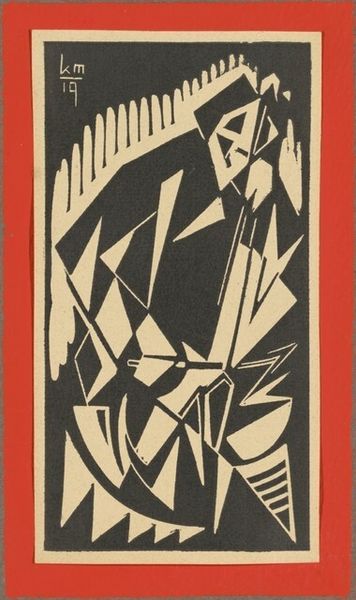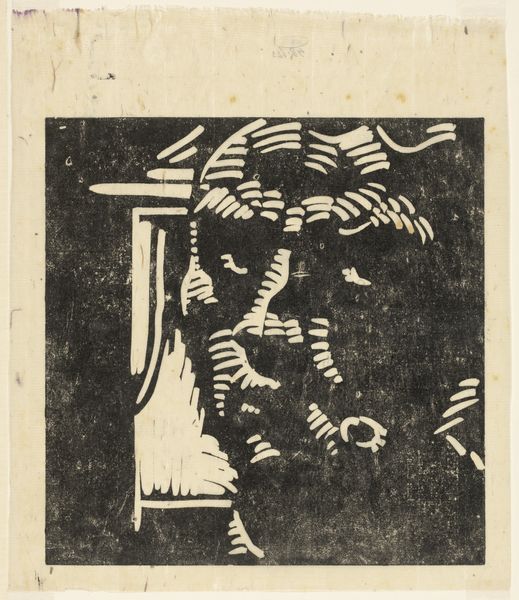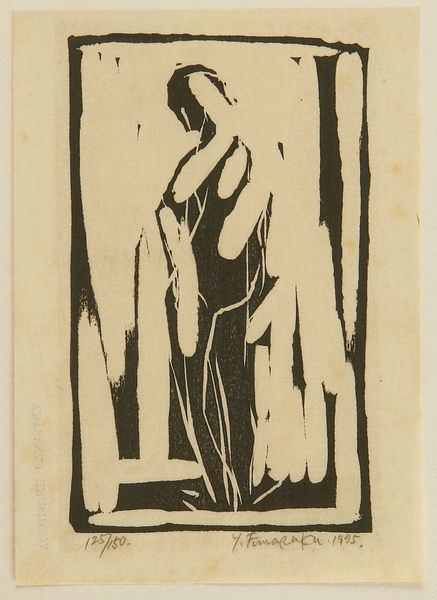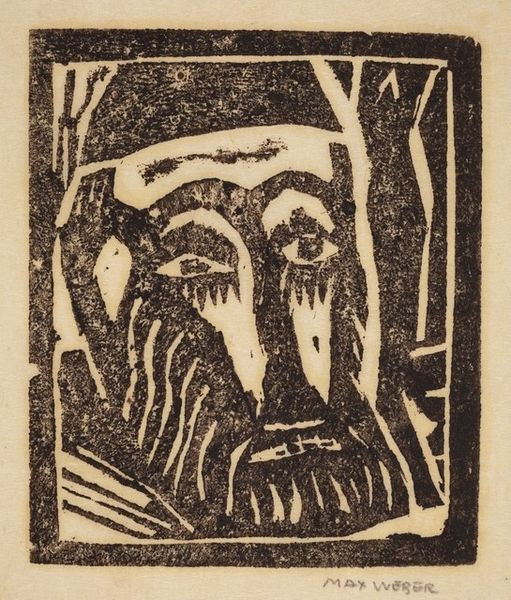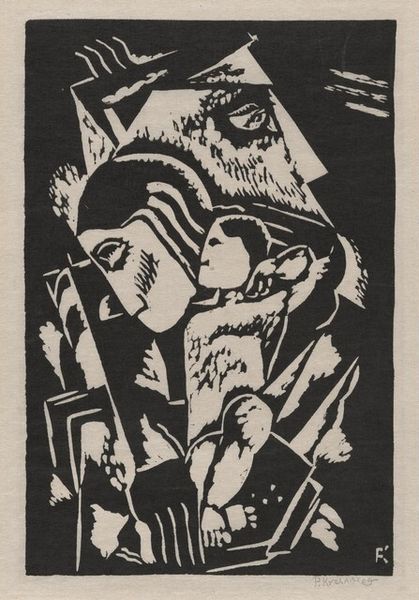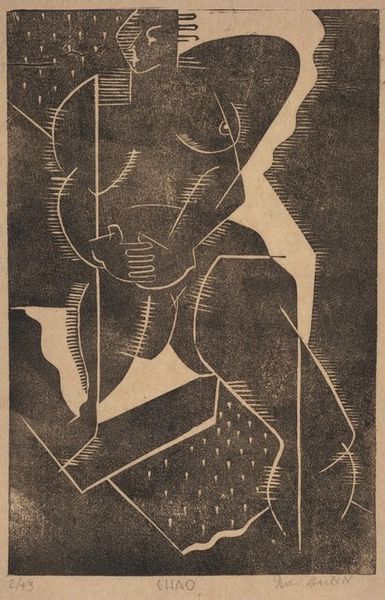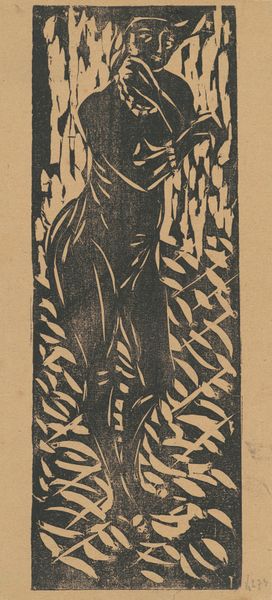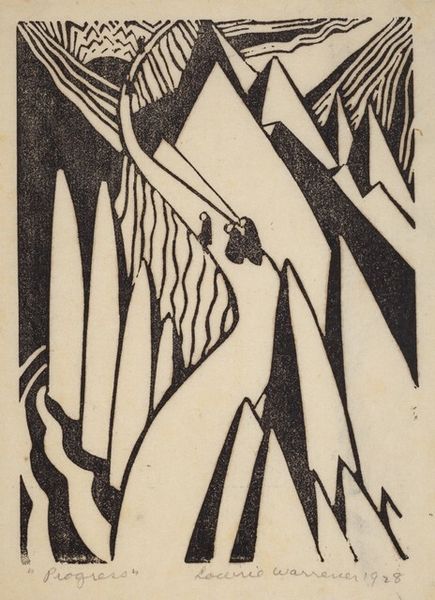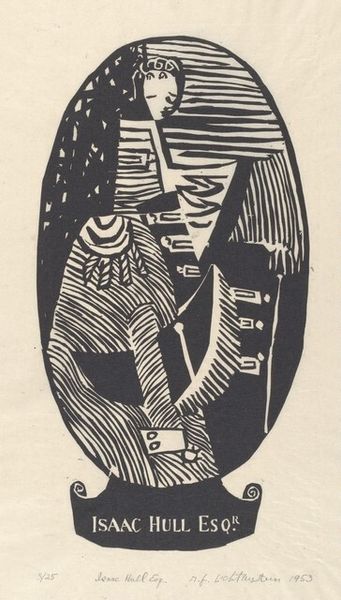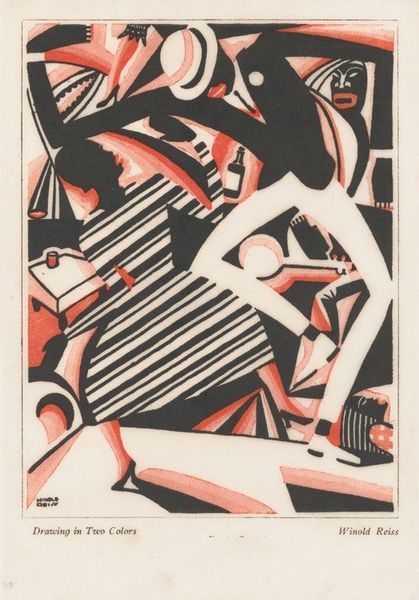
Copyright: National Gallery of Art: CC0 1.0
This is a woodcut titled "Fiet van Stolk-Van der Does de Willebois" made by M.C. Escher in 1912. The portrait of the sitter is rendered in bold lines, typical of early 20th-century printmaking, with a background of vertical stripes. Escher, of course, is best known for his mathematically inspired works that play with perception and challenge our understanding of space, but here he is a young artist, a teenager in fact, working within the conventions of portraiture. It was a time in the Netherlands marked by social and political changes. As an art student, Escher would have been part of a community that engaged with these evolving ideas and approaches to art. Understanding the social and institutional contexts is crucial to understanding how the artist found his unique voice. By exploring archival sources, letters, and early reviews, we can trace Escher’s journey from a student working within established artistic norms, to an artist who would challenge those conventions.
Comments
No comments
Be the first to comment and join the conversation on the ultimate creative platform.
